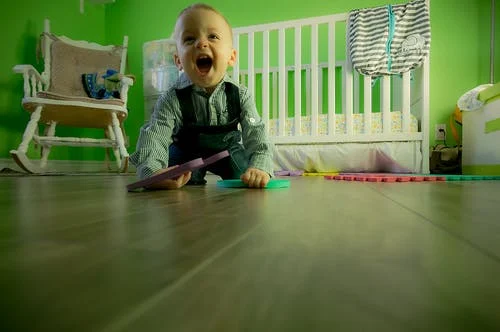
Children are the best part of any parent's lives. Whether we're adopting, gaining stepchildren, or giving birth, there's a lot to do to prepare a home for your children. The main concern is always safety; from there, we have to think about comfort. Here are the steps any parent and guardian should take to prepare a home for children, and rest easy knowing they're safe.
Gates
Baby gates gained their name because of how useful they are to keep small children out of trouble. Although there are prominent areas that should be gated off for kids, it's essential to consider other areas of your home like stairs. Some states have mandated that pools and hot tubs have to have fences around them to keep children from falling in recent years. These are a necessity to consider if you have a pool in your backyard. If you have a doggy-door that your pet can go in and out of, consider springing for one that only opens when activated by a collar. This barrier will help keep your child from sneaking out while exploring.
Electricity
This hazard may seem like an easy one to avoid, yet there are many hazards we all overlook. Little kids don't understand the importance of safety around electricity, so it's our job to educate them. Outlets shouldn't be exposed so that little ones can lick or touch them- but this isn't where we stop. Look into cable management and anchoring things like televisions or large computer monitors into walls. You may think that your child couldn't possibly knock anything over, but a pulled cord can quickly yank down any large and heavy electronic device. Mount anything you can into a wall or desk, and work to keep your cables inaccessible to little kids.
Furniture
The classic move when there's a new child is to add baby locks to fridges and cabinets. This plan is a significant step to take and will help you move towards keeping your child safe. Another thing to consider is any drawers, nightstands, dressers, or bookshelves that may be top-heavy. This type of furniture is inviting to climb, especially with how popular ladder bookshelves have been lately, and can easily get knocked over or pulled down. This heavy furniture could crush or seriously harm a child and has led to dozens of lawsuits in recent years. Anchor this furniture into walls if you can, and then take whatever steps you can to keep your child away from it. You don't have to throw out all of your furniture; make it safer for your child.
Choking Hazards
Everyone has hobbies, especially these days, when we're spending more time inside than ever before. Whether yours is collecting stamps or vintage video game cartridges, most hobbies have small parts that could put a child at risk. If you're a crafter or a whittler, make a space for yourself to enjoy this hobby that your child won't be able to access. A child choking is incredibly time-sensitive, and the last thing any guardian wants is to leave the room for a couple of minutes; it takes any child to choke on something they've put in their mouth. Please pay attention to everything in your home and how large it is, and put the more dangerous things in areas your child won't be able to reach.
Pet Hazards
We love our pets! Our children love our pets! It’s good to have animals in the home because they allow you to teach responsibility and understanding to kids in a way, unlike any other. Unfortunately, with pets comes specific hazards. Litter boxes, medicated dog food, flea collars, all of these can be dangerous if ingested by a child. Keep pet supplies and somewhere that your child can't reach. Most cats can quickly jump over a baby gate, so don't be shy about putting one up between the main house and where you keep your litter box.
If you have to start feeding your dog outside to ensure your child cannot get into any medicated food, you should do that.
We want our children to enjoy having pets, but it's essential to do what you can to keep your baby safe.
Sharp Corners
If your child is starting to walk, now's the time to pad corners of sharp walls, side tables, and other furniture. Children beginning to walk have a lot of momentum carrying them forward, leading to them running and possibly slamming into sharp corners. Many people grow up with scars on their eyebrows or horror stories about how scared their parents were when they wiped out against a counter, but that doesn't have to be the case for your child! Take precautions to ensure that when your child decides to go forward at full speed, there's nothing sharp to take them down on their way.
Comfort
After all of this, it's vital to ensure your home is a comfortable one for kids. If you only have hardwood floors, put down some rugs or carpet that will be softer on those learning how to crawl or walk. A good tip is to get a fabric that you're able to clean quickly since children are messy and generally unpredictable. Get furniture that is comfortable for kids; you should look into different sofa reviews since parents will often comment if a fabric holds stains or not.
Our kids have great futures ahead of them, and our jobs are to create spaces that ensure their safety and comfort while also keeping them entertained. With a little planning and some flexibility with the layout of your home, you can create a space that will allow your child to grow up happy and safe at the same time.



























